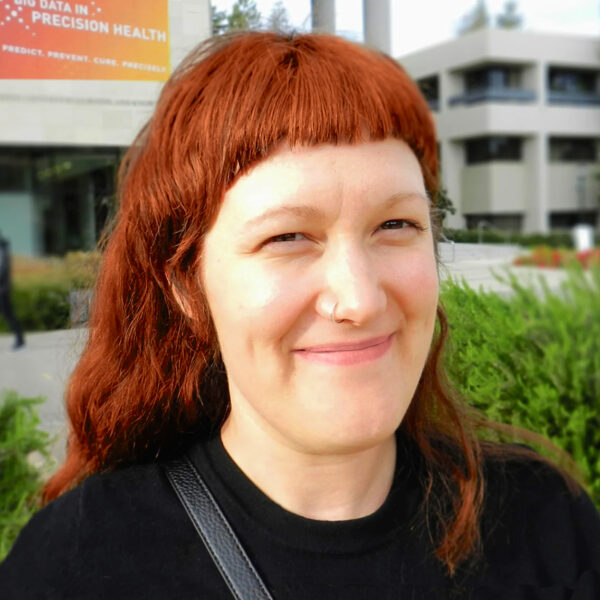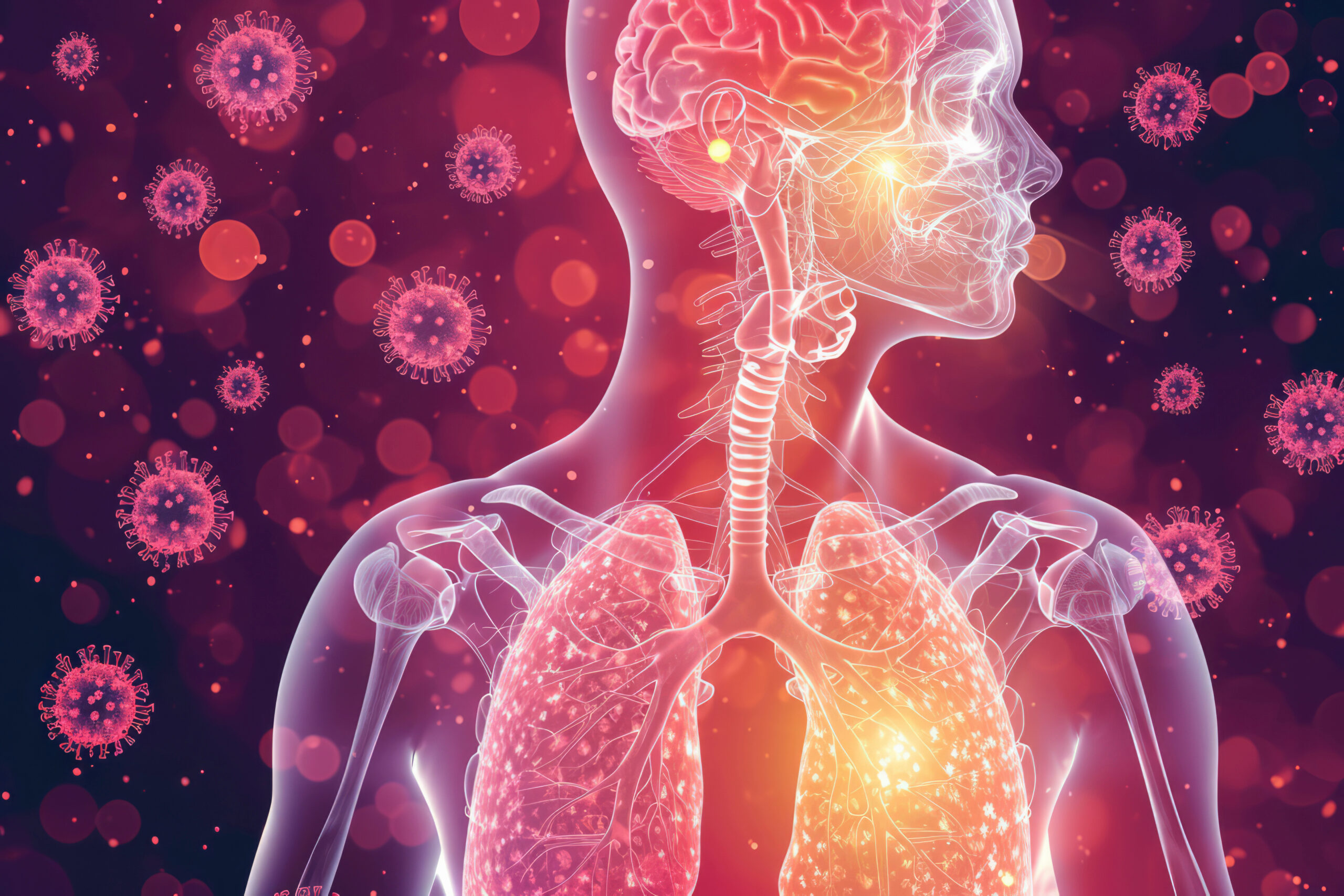Why do some vaccines protect some individuals and not others?
Blending machine learning with systems human immunology, Professor Adriana Tomic is working toward creating effective, long-memory vaccines for strong immunity against pandemic-potential viruses
By Chloe Wojtanik and Maureen Stanton
The flu affects about a billion people annually, abruptly forcing people to take sick leave, scramble for childcare coverage, and other disruptions. While the majority will suffer chills, runny noses and body aches, others will face serious complications and death. Flu kills about 650,000 people globally each year, and millions are hospitalized.

Adriana Tomic, an assistant professor of biomedical engineering, virology, immunology, and microbiology, and a Hariri Institute junior faculty fellow, is working to solve this complex problem with her team at the Atomic Lab.
The Atomic Lab is a systems immunology group at the Boston University National Emerging Infectious Diseases Laboratories (NEIDL). The researchers there are working on understanding the body’s defense, or immune system, figuring out how to boost it, and speeding up the creation of new vaccines. The researchers are specifically aiming to improve vaccines and treatments for major infectious diseases, especially those that can spread quickly and widely, causing pandemics like the flu and coronaviruses. Their work stands out because they merge together multiple fields of study: infection biology, immunology, vaccine development, engineering, artificial intelligence (AI), and computer science. This interdisciplinary approach focuses on the complexities of human immunology before extending to animal studies, thus prioritizing human immunology over animal-based studies from the very beginning.
Starting with Human Samples
Professor Tomic’s laboratory takes a unique approach to vaccine development than most counterparts – they primarily work with samples derived from human cells rather than animal models.
“There’s a pronounced disparity in the genetic and the environmental impact on immunity between humans and mice,” explains Professor Tomic, a Hariri Institute junior faculty affiliate.”By focusing our research directly on human cells from the start, we are able to bypass the time-consuming and challenging process of extrapolating data findings from mice to humans.”
By initiating the vaccine development process directly from human cells, Professor Tomic and her team are leveraging a more effective method and significantly reducing the waiting period for new vaccines. This pioneering approach aids in swiftly improving global health outcomes by accelerating the delivery of more potent vaccines.
Cracking the Code of Our Immune System’s Defense Strategy
When someone gets sick or gets a vaccine, their body’s defense system, or immune system, springs into action. There are many different types of cells in the immune system that work like a team to protect us. But it’s like a puzzle and we’re still trying to figure out which cells are the most helpful for fighting off different germs, like the flu or SARS-CoV-2. Professor Tomic and her team at the Atomic Lab are on a mission to crack this puzzle.
“You can’t count on just one big, tough cell to protect you,” Professor Tomic explains. “It’s more like a soccer team where different cells play different roles but they all work together to win the game. We’re trying to figure out which cells are the strikers or the defenders in the fight against different germs.”
They do this by conducting experiments where they introduce proteins from the germs, like flu or SARS-CoV-2, to the human immune cells to see how they react. This allows Professor Tomic and her team to identify how treatment might look for people who experience mild to severe symptoms.
The team at the Atomic Lab also looks at cell samples from people at different stages of life, including very young children and elderly individuals, especially after they get a vaccine or are dealing with a sickness. By studying their immune cells, and how they react to the same germ, Professor Tomic and her team hope to create better game plans (vaccines) to help the body’s team of cells win the fight against these germs.
Intelligent Immune Design
Professor Tomic and her team at the Atomic Lab harness the power of artificial intelligence (AI) and complex data analysis to enhance the ability to predict how our body’s defense system – immune system – will respond to infectious diseases and vaccines. The Atomic Lab team developed a unique tool known as SIMON (“Sequential Iterative Modeling OverNight”), an open-source AI platform that is specifically designed to analyze how the human immune system reacts to infections and vaccines.
Professor Tomic and her team first introduced the concept of applying machine learning, a subset of AI, to high-dimensional clinical datasets. Their work titled “SIMON, an Automated Machine Learning System, Reveals Immune Signatures of Influenza Vaccine Responses” was highlighted in one of the most-read scientific papers of 2019 and 2020 by American Association of Immunologists. The paper showed how SIMON could be used to predict who will be protected against flu infection after obtaining flu vaccine.
In their ongoing research, Professor Tomic and her team use SIMON to predict how well an individual’s immune system will respond to a vaccine and to foresee who will be affected heavily by a disease and who will not. They also deploy SIMON to figure out how long a person’s immune defenses last after getting infected. Moreover, they leverage SIMON’s advanced machine learning capabilities to improve prediction models and for fundamental immune cell population research and exploration of new cell types.
Developing Long-lasting Vaccines
Professor Tomic’s biggest research question focuses on long-term protection: Why can’t we create long-lasting protective immunity through vaccination for every pathogen?
Whereas infants who receive the measles vaccine are generally protected for life, the Centers for Disease Control and Prevention recommends that everyone receive the influenza vaccine each year. Why does the measles vaccine offer such efficient protection while the flu vaccine offers only 40-60% protection?
To try to solve this, Professor Tomic and her team combine experimental tests with computer calculations that look at the whole immune system. This helps them zoom out and see the big picture of how our bodies remember how to fight off germs. They hope this will help them create better vaccines.
“We want to figure out the major players and processes that lead to establishment of lifelong or long-term protection at least,” says Tomic. “Once we know that, we’ve got ourselves a roadmap for making better vaccines and therapeutics.”
